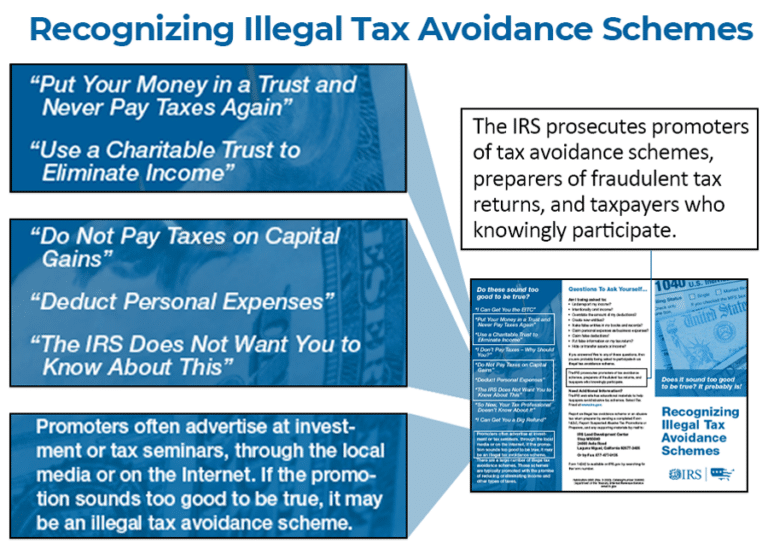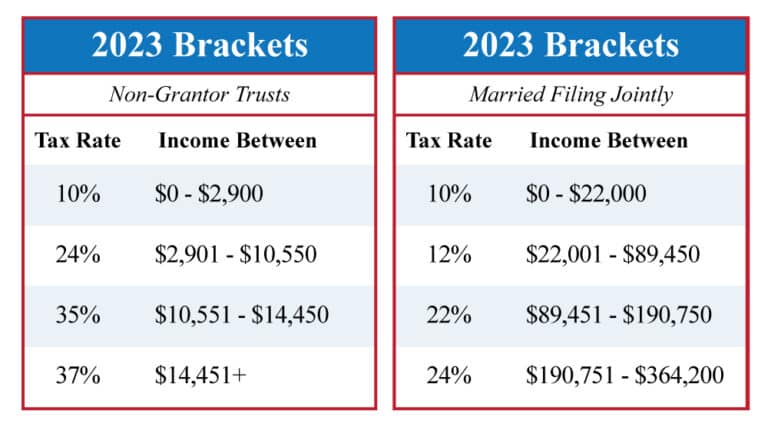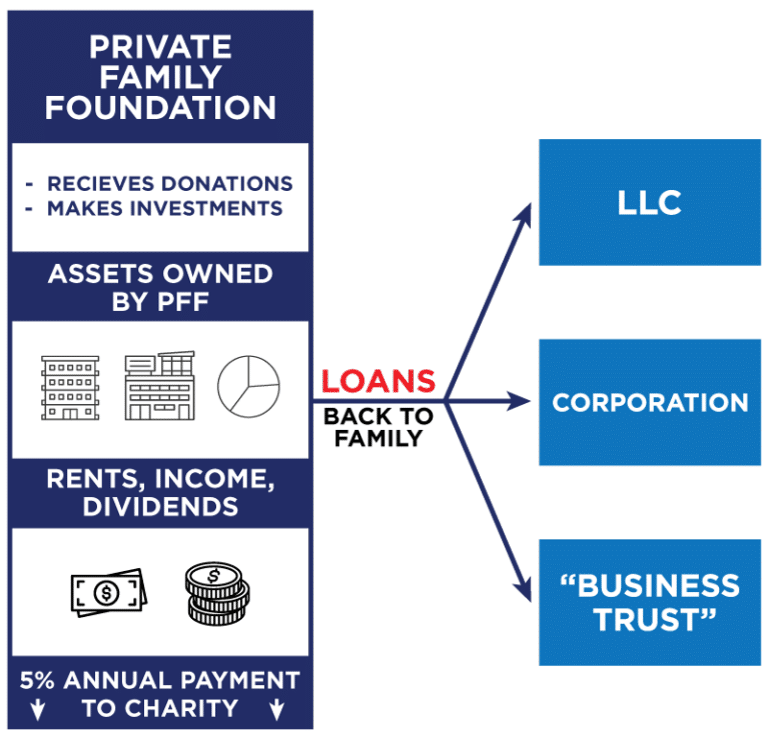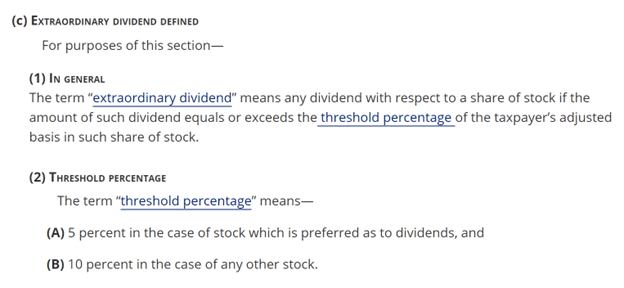Buyer Beware: Discretionary Non-Grantor Irrevocable Spendthrift Trust Scheme Examined
Let me guess…
You’ve been told you can legally reduce your tax liability by funneling your income through a bunch of irrevocable spendthrift trusts that file a 1041 tax form vs. your typical 1040, right?
And all the buzz around these schemes sounds amazing:
- “Control everything while legally owning nothing”
- “Using tax form 1041 makes tax reporting so much cleaner”
- “Use the same trusts the wealthy use to avoid taxes & lawsuits”
You’ll have full discretionary control of everything as the trustee while passing tax-free fortunes across generations and avoiding lawsuits thanks to spendthrift provisions.
It all sounds wonderfully attractive, but you’re not getting told the whole story!
Slivers of truth do exist in these marketing schemes, but they are being grossly exaggerated or misconstrued to get you sold on an expensive set of complex trusts that likely won’t hold up under audit.
How’d you like to play the audit lottery each year hoping your card doesn’t get pulled?
It’s kind of like playing “Russian Roulette” with the Internal Revenue Service (IRS).

Let’s put our thinking cap on while taking a look at the clear warning signs and red flags.
(Clickable) Table of Contents
Is a Non-Grantor Irrevocable Spendthrift Trust Legal?
Yes, a discretionary non-grantor irrevocable spendthrift trust is a legal structure, but it may become illegal depending on how you use it in conjunction with other types of trusts and charitable entities.
Did you know the IRS has a special section on their website for “Abusive Trust Tax Evasion Schemes”?
At the bottom they present some clear warning signs in Publication 3995 “Recognizing Illegal Tax Avoidance Schemes”:

Is it a coincidence that several of the warnings above happen to be IDENTICAL to the major selling points used to pitch these discretionary non-grantor irrevocable spendthrift trusts schemes?
Ask yourself these 3 questions:
- Would playing fast and loose with the tax code keep you up at night?
- Are you trading tax savings for legal fees to draft and monitor these complex trusts?
- If challenged, could you pay all the back taxes plus penalties all at 7% interest?
Keep in mind that the penalties are 0.5% per month plus the 7% interest even that accrues on the penalties. These are actually the lightest penalties assuming there was no willful avoidance in which case you could pay up to 75% of the back taxes owed (at interest).
Let’s break down the 4 major red flags of these complex trust schemes that coincide with the IRS warning signs:
“Put your money in this trust and never pay taxes again!” - Irrevocable Trust Myth
The first warning sign advertised by the IRS probably sounds pretty familiar if you’ve been pitched these discretionary spendthrift trusts.
Remember that in order to use form 1041 you have to legally transfer your assets irrevocably to a non-grantor discretionary spendthrift trust for the benefit of others.
All that fancy legal mumbo jumbo makes this scheme seem so legitimate, but Shakespeare would say these complex trusts are named “by an idiot, full of sound and fury, signifying nothing.”
Sure, all of these words are actual legal trust terms. But just because you throw a bunch of legal jargon together it doesn’t create income tax savings. Not even if you pay for 3 separate irrevocable spendthrift trusts with cute names like:
- A Family Trust
- A Business Trust
- A Charitable Trust
Nope, that doesn’t get it, nor does a multi-member LLC owned 2% by you and 98% by your discretionary trust.
Sorry, not even magical form 1041 ultimately erases your tax liability.
Quite the contrary actually. Non-Grantor Trusts start paying taxes at the 37% rate (highest tax bracket) once 1041 records a measly $14,451 of income!
Conversely, a couple filing married filing jointly will remain in the 12% bracket until they reach $44,275 of income on form 1040, and only 24% up to $364,200 of income.

So, in order to zero out the tax liability and avoid the highest bracket, an irrevocable non-grantor spendthrift must distribute its income to one of 3 places:
- A legit charity (more on this later)
- The beneficiaries (not you, but likely your kids)
- Another trust (that will have the exact same issue)
Seeing the proposed money flows through these complex trust schemes to avoid taxes reminds me of the shell game by street grifters.

If you never get audited that’s great. But if you do, what will the paper trail look like?
Some of you have been told that as discretionary trustee of an irrevocable spendthrift trust you can spend money on the beneficiaries (your kids) and deduct it against trust income on form 1041.
This brings us to 2nd warning sign shared by the IRS:
“Deduct your personal expenses [as discretionary trustee]!” - Spendthrift Trust No-No
Where do I start?
Ok, if you plan on deducting groceries and vehicles for your kids and calling them deductible trust expenses, isn’t this just your/their personal expenses?
Do you really think just because you put them on line 15a on form 1041 that this magical deduction is hiding in plain sight from the thousands of tax planners in America? This one firm doing webinars for above-average Joe’s copyrighted this technique?
C’mon, man! Really?
“You own nothing but control everything” as I’ve seen these schemes marketed.
The problem with this is similar to how the corporate veil gets pierced. If you treat a discretionary trust like your own private piggy bank, then so will your creditors if they take you to court (including the IRS in tax court).

Download a free PDF to check your state’s stance on lawsuit protection for life insurance here.
What else have I heard?
Transferring your personal residence to the trust for a demand note, but still living in it rent-free… LOL.
Putting the trustee’s personal residence inside a discretionary irrevocable non-grantor spendthrift trust has always been the poster child of exactly what not to do. Even if you charged yourself fair market value rent, it’s still a dicey practice and often draws scrutiny to the entire complex trust structure.
Not even properly drafted documents, timely filed tax forms, and complex trust structures can fix a bad fact pattern when it’s put in front of a judge in tax court.
They look for “substance over form”, and will often declare questionable situations to be either a “step transaction” or a “sham transaction.
Step Transaction = “a series of transactions designed and executed as parts of a unitary plan to achieve an intended result … will be viewed as a whole regardless of whether the effect of so doing is imposition of or relief from taxation.” – IRS on Step Transaction Doctrine 2008
Sham Transaction = “a transaction that is made to mislead or deceive others: a transaction having no economic effect that is made to create tax benefits” – Websters Dictionary
Either way, even if you were NOT planning on deducting much in the way of personal expenses as “trust expenses”, then let’s discuss how the promotors of these complex trust schemes promise you really big deductions.
This happens to be the final hiding place of this shell game of discretionary spendthrift trusts as well as the 3rd big warning sign of the IRS.
"Use a Charitable Trust to Eliminate Income!" - Compex Trust Tax Avoidance
When you follow the trail of these form 1041 distribution schemes from one irrevocable discretionary non-grantor trust to another, you realize that wherever the income is distributed to last owes taxes…
Unless, that final hiding place in the shell game is legally registered charitable entity

This is where promotors have you set up your own Private Foundation (with their help of course).
How convenient for them!
It’s yet another opportunity to draft even more documents for you plus extra complexity you’ll be paying them annually to manage.
It seems so sexy! You only donate 5% per year to charity, which does seem an awful lot better than paying 30%-50% in taxes.
The only problem is the money contributed to the Private Foundation for a deduction is no longer yours. It’s for the greater social good, which is why you’re entitled to a tax deduction in the first place.

Since you control these charitable funds you also have a discretionary fiduciary responsibility to the Private Foundation to prudently invest those funds for the greater good.
This is where the promotors tell you that you can invest in real estate and/or even lend the donated funds back to your business ventures!
Sounds great, right?

After all, a Private Foundation needs to make investments, so of course it can earn money by making loans.
Why would the foundation invest in bonds from companies like Apple or J.P. Morgan Chase when it can simply lend money to steady enterprises like your LLC, your S-Corporation, or your Business Trust?
You better hope an auditor or judge doesn’t find any reference to this kind of premeditated incestuous charitable loan scheme.
The IRS has a catch-all term called a “Sham Transaction” that can negate any legal structure they decide is lacking substance. Here’s how Cornell University describes a Sham Transaction:
A transaction that is unlawful or illusory. Illusory transactions that exist on paper but have no tangible consequences may be voided in court, especially if used as a tax shelter or other deceptive device.
Cornell University
I remember 10 years ago hearing about what sounded like the most iron-clad legal tax avoidance scheme.
It started with a multi-member LLC that eventually donated the non-voting units to a charitable fund which you still controlled as the LLC’s managing member.
Since you managed the LLC’s money, you could take loans from the charity’s LLC account to support your other ventures.
Same movie but a different cast of characters:
- 2018 = LLC + Donor Advised Fund
- 2023 = Non-Grantor Trust + Private Foundations
History may not repeat, but if it rhymes, then your problem will be with execution…
And I don’t mean how this plan was executed, but rather how the DOJ is still trying to execute clients and promotors who used these charitable funds as their own private slush fund or family piggy bank.

Notice how I’m no longer talking about the Internal Revenue Service (IRS), but rather the Department of Justice (DOJ). Yeah, it’s not just tax consequences you must dodge, but criminal allegations too when it comes to schemes involving charity.
Let’s fast-forward 5 years and see how the DOJ responded to this particular charitable scheme?
I saw colleagues of mine getting served, audited, and even arrested.
Whoa!
So if this cautionary tale can save some of you, here’s exactly what the DOJ said on its website www.Justice.gov as it relates to accessing funds which you took a charitable deduction for:
“The government argued in its court filings that (Promoter) falsely advised participants that they could claim an immediate up-front tax deduction, grow assets tax-free, access assets through tax-free loans, and preserve wealth for themselves and their heirs… …Because taxpayers retained control over their “donations,” however, all of the alleged tax benefits were unlawful, according to the United States’ court filings.”
Justice.gov - DOJ
Earlier in their article on this matter, the DOJ sums up nicely why these charitable tax schemes are easier to go after if they discover the same marketing that attracted you in the first place.
“(Promoter) allegedly told scheme participants they could claim significant tax benefits while retaining complete control over assets purportedly donated to charity.”
Justice.gov - DOJ
If this sounds eerily similar to what you’re being pitched, then you may want to rethink acting on this plan and unwinding it sooner rather than later.
Do you really want to pay someone a lot of money to draft documents adding a tremendous amount of complexity to your life that may later blow up in your face?
Not to mention, are you really ready to give up control of your assets?
This brings us to a different version of the trust scheme that doesn’t involve charity, but does coincide with our last IRS warning that many promotors are using to bait you into their schemes.
"Don't Pay Taxes on Capital Gains!" - Section 643 Trusts
Not all of these Discretionary Irrevocable Non-Grantor Spendthrift Trusts require pretending to give your money to charity.
Some of you have heard that you can transfer assets to an irrevocable non-grantor discretionary spendthrift trust and avoid capital gains so long as the assets stay inside the trust. They make it seem almost like a jumbo retirement account without limits so you can time your tax as you distribute future income.
When bits and pieces of Section 643(a)(4) were originally pitched to me in 2018, the promotor literally told me it was a hidden part of the tax code used by a very wealthy iconic American family.
He went on to say how the structure was now copyrighted by a very elite legal group that only works with select suckers…I mean clients.
I chuckled because he was making it seem like this was buried treasure and that he was now going to share the map with me and the clients I was so privileged to refer to him.
I felt like I had entered an episode of American Greed!
Then during his presentation, I started digging into Section 643 for the tax-planning gold he was promoting.
You too may have heard certain promotors cite this same section of IRS code that sounds “extraordinary”, quite frankly:
Items of gross income constituting extraordinary dividends or taxable stock dividends which the fiduciary, acting in good faith, determines to be allocable to corpus under the terms of the governing instrument and applicable local law shall not be considered income.
Section 643(b)
It turns out the promotor was cherry-picking certain language to make his scheme seem more believable.
The reason why Section 643 is never talked about is NOT that some wealthy family was hiding this magical nugget in the code to avoid income tax. It’s never talked about because Section 643 is simply defining what “income” is for purposes of knowing what types of dividends must be purged from a non-grantor trust vs. what may be retained.
Like bad reality TV, the promotor conveniently omitted this caveat from his slides.
It simply means that if a trustee of a discretionary irrevocable non-grantor spendthrift trust doesn’t want to categorize dividends as “income”, then he/she can retain these dividends inside the trust rather than distribute them (even “relating to trusts which distribute current income only” Section 643 says).
That’s it!
The trust must then pay tax on dividends at the trust tax rates.
But wait, what about these “extraordinary dividends”?
Don’t get too excited. Again, it sounds “extraordinary”, but the reason it’s rarely talked about is that extraordinary dividends don’t occur very often.
Have you ever owned a stock that pays a very large dividend to shareholders after a windfall year?
That’s basically what an extraordinary dividend is as defined by Section 1059.

If a stock in your trust pays an “extraordinary dividend”, you can elect to reduce the basis in the stock when it’s sold vs. paying tax on the dividend now.
That’s it!
Sorry. You can’t “declare” dividends or taxable gains to be “extraordinary” in some willy-nilly fashion and the defer taxes indefinitely.
Adding these kinds of complex trusts to your life will likely only result in deferring tax penalties and interest due, not the tax itself.
The Use of Life Insurance in Conjunction with Non-Grantor Trust Tax Schemes
If there’s one thing the IRS will consistently come after with a vengeance, it’s schemes that create tax-deductible life insurance.
Why?
Life insurance is already afforded generous tax advantages by Federal and State governments very similar to a Roth IRA.
The reason the IRS allows this favorable tax policy is because life insurance provides a societal good, and they want to incentivize people to protect their families and businesses with policies that won’t expire.
But since life insurance is funded with post-tax dollars, at least they know they get their pound of flesh before these dollars become immune to future taxation.
However, adding a bogus charitable deduction to essentially allow for pre-tax dollars to flow into a Roth-like vehicle like life insurance creates the triple-tax-free scheme that both the IRS and DOJ view as a “triple threat.”
Over the years they’ve cracked down on:
- VEBAs
- Countless combos of charitably deducted life insurance
- Section 79 (Group Life Insurance) Plans
Group life insurance plans even had its own Section 79 in the tax code complete with actuarial parameters to abide by like retirement plans.

But business owners were being advised to stretch this benefit to the legal limits creating copious amounts of tax-deductible life insurance.
The IRS eventually disallowed Section 79 plans after years of blessing them in the code and passing countless audits.
VEBAs or Voluntary Employer Benefit Associations are in a similar boat. Once life insurance was being used to maximize this triple threat, the IRS cracked down hard.
You can see the hard line the IRS & DOJ takes on any sort of bogus charitable tax planning scheme, but they seem to strike faster and harder when life insurance is involved. In fact, several reputable insurance carriers often ask a myriad of questions for trust-owned Whole Life policies where charitable planning is involved.
Life Insurance is Good Enough On to Stand On its Own Feet Without Complex Trusts
What’s crazy to me is how so many agents feel they must resort to these crazy schemes just to sell a policy. It’s probably because Whole Life insurance is basically the red-headed stepchild of the financial industry. These agents feel the need to intertwine life insurance as a requirement for some kind of complex trust scheme.
In reality, Whole Life often should be the foundation for any high-net-worth individual or business owner for these 4 reasons:
- Net-after-tax growth rates better than most banks or safe bonds
- Ability to borrow while keeping all cash value continuously compounding
- Extra death benefit (sometimes even accessible if needed for long-term-care)
- Creditor protection from lawsuits in several states (check your state’s stance on lawsuit protection for life insurance).
Most other financial products or accounts can’t even guarantee one of these, much less all 4 at once.



Benefits like these are worth paying for even with your after-tax take-home pay without any complexity or audit risk attached to it. So when wrapped with black-letter-law tax planning, a properly-designed Whole Life policy can create true financial certainty without the anxiety of wondering if things will “hold up.”
In fact, even when clients do have irrevocable complex spendthrift trusts for asset protection or multi-generational estate planning, we’ll often encourage them to keep Whole Life insurance outside the trust for these reasons:
- Liquid and accessible
- Safely growing no matter what
- State Lawsuit Protection (making creditors more likely to leave or settle)
Download a free PDF to check your state’s stance on lawsuit protection for life insurance here.
Conclusion on Irrevocable Discretionary Complex Non-Grantor Spendthrift Trusts
Before getting lured into bright shiny tax schemes that sound incredible, put on your thinking cap to determine how credible they really are.
Are you hearing things that sound exactly like “Abusive Trust Tax Evasion Schemes” the IRS warns the public about?
If so, consider the following:
- Does it seem a little too good to be true?
- Who is left to suffer the consequences if things don’t work out?
- Who stands to benefit from adding this kind of complexity to your life?
- Would you want to pay back taxes as well as 25% penalties at 8% interest if things don’t work out?
- Have you thoroughly explored means by which you can legally reduce your tax liability using black letter law means?
Furthermore, what if you could legally reduce your individual form 1040 tax burden to within the 10%-24% brackets using black letter law strategies while keeping full control (and creditor protection) without wondering if your “tax savings” will be challenged?
Not to mention you can use Whole Life insurance to create a very unique and legal tax-sheltering of liquid assets as well as embedded creditor protection (available in most states).

John “Hutch” Hutchinson, ChFC®, CLU®, AEP®, EA
Founder of BankingTruths.com


